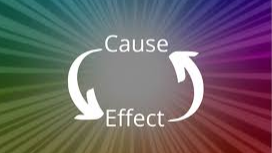
In today’s corporate world, women executives are breaking barriers, leading industries, and driving innovation. However, beyond the boardroom, many face a hidden challenge: the “second shift”—the relentless responsibilities of caregiving that persist long after office hours.
The Reality of the Second Shift
For decades, research has shown that women, regardless of their career success, still carry a disproportionate share of household and caregiving duties. While progress has been made in workplace equality, the expectations at home have not shifted at the same pace. A senior executive may spend her day negotiating multimillion-dollar deals, only to return home and oversee homework, dinner, and aging parent care. The mental and physical toll of balancing these dual roles can be overwhelming.
Why the Burden Persists
Several factors contribute to this ongoing struggle:
- Cultural Expectations – Traditional gender roles still influence perceptions of responsibility at home, even among progressive families.
- Guilt and Societal Pressures – Many high-achieving women feel the need to “do it all,” fearing judgment if they delegate caregiving tasks.
- Lack of Institutional Support – While companies are making strides in flexible work policies, systemic changes in caregiving support are still lacking.
- Invisible Labor – Planning meals, scheduling doctor appointments, and organizing household logistics often fall to women, adding an unrecognized mental load.
The Impact on Career and Well-being
This dual responsibility affects not only personal well-being but also professional growth. Studies show that executive women are more likely to experience burnout than their male counterparts, often leading to career stagnation or early exits from leadership roles. The constant juggling of high-stakes decisions at work and emotional labor at home can lead to stress, fatigue, and feelings of inadequacy.
Rethinking Support Systems
To create sustainable career paths for women leaders, organizations and families alike must rethink support structures. Here’s how:
- Corporate Policy Shifts
- Redefining Household Roles
- Building a Strong Network
A Call for Change
The silent struggle of women executives managing the second shift must be brought to light. Recognizing and addressing these challenges is not just a women’s issue—it’s a leadership and societal issue. By redefining success, advocating for systemic support, and shifting outdated expectations, we can create an environment where women no longer have to choose between thriving at work and fulfilling personal responsibilities.
Final Thought
True progress means acknowledging the unseen burdens and reshaping the future of leadership to be more inclusive, sustainable, and balanced. The conversation starts now—how will your workplace, home, and community support change?
Helping Executive Women Reduce Stress, Prevent Fatigue & Avoid Burnout
📩 Follow me for more insights or send me a message to connect!









